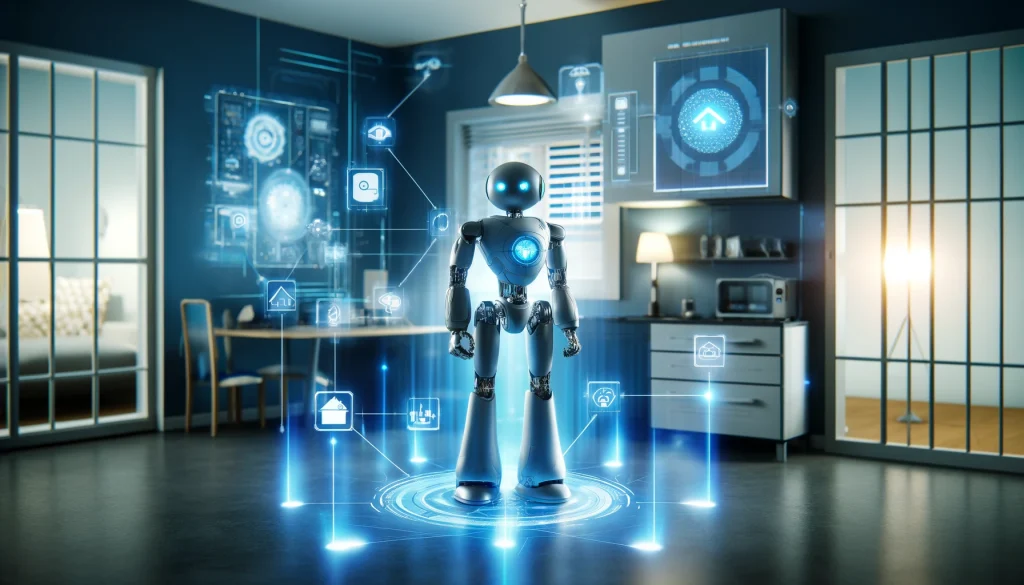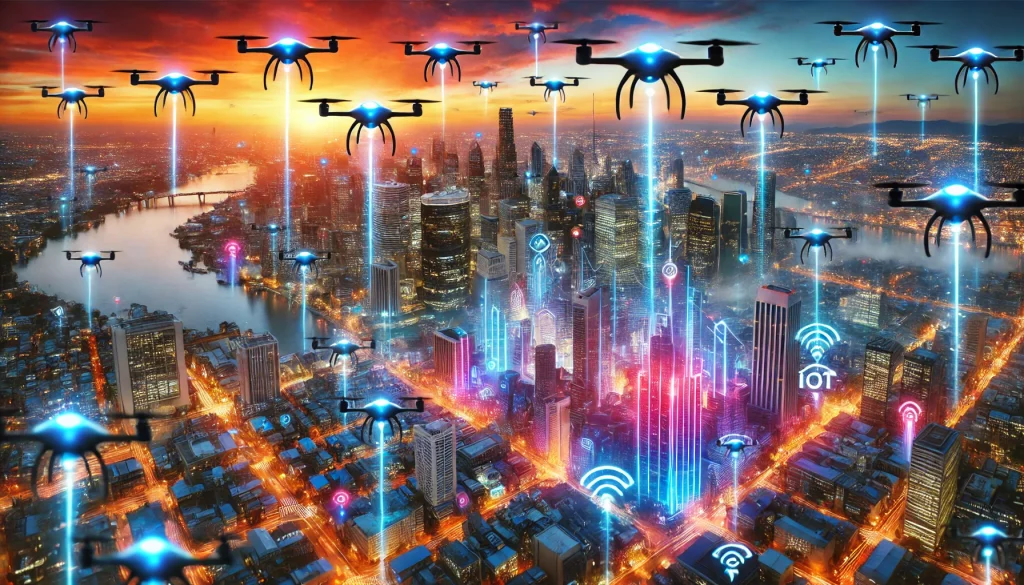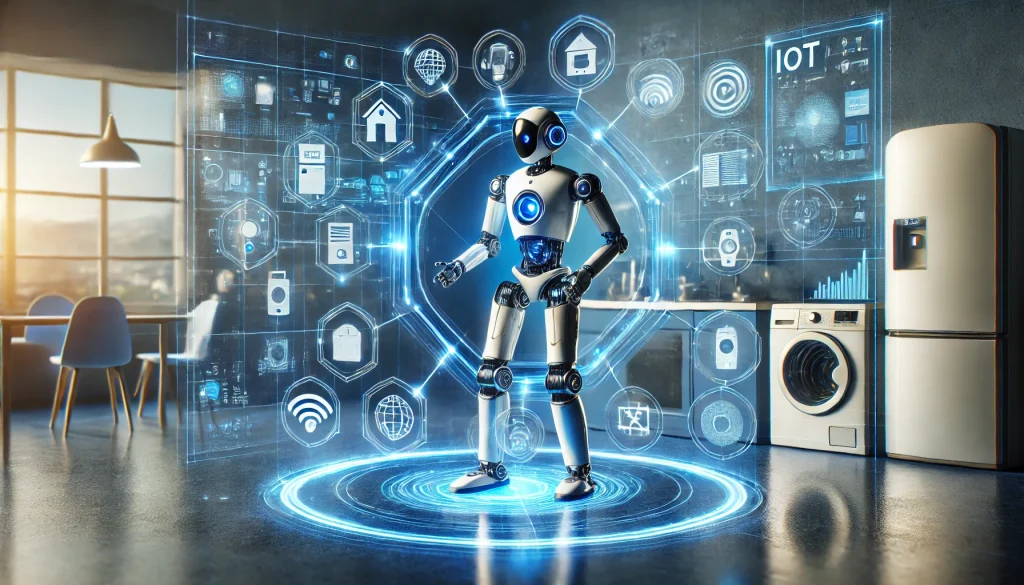
The world of technology is advancing at a rapid pace, and Robotics and IoT (Internet of Things) are at the forefront of this evolution. These technologies are driving transformations across industries, from manufacturing and healthcare to everyday life. In September 2024, we’re witnessing exciting developments that push the boundaries of what’s possible, thanks to innovations in AI, engineering, and connectivity. Let’s dive into the recent breakthroughs, emerging applications, and the challenges and opportunities that come with the integration of robotics and IoT technologies.
Overview
In today’s digital age, Robotics and IoT play a crucial role in enhancing automation and interconnectivity across various sectors. Robotics, powered by AI and advanced engineering, enables machines to perform complex tasks with precision and speed. The IoT—a network of interconnected devices—adds another layer of sophistication, enabling real-time data exchange and decision-making. Together, they are transforming industries by optimizing processes, reducing human intervention, and improving efficiency.
In September 2024, the convergence of robotics and IoT is shaping the future of manufacturing, healthcare, agriculture, and even our homes. Businesses are investing heavily in these technologies, creating smarter systems capable of working autonomously while being monitored remotely through IoT frameworks.
The Importance and Relevance of Robotics and IoT

The integration of Robotics and IoT has never been more relevant, especially in an era of AI-driven automation. As these two fields merge, they offer businesses a competitive edge by enhancing productivity and reducing costs. In manufacturing, for example, robotic arms controlled via IoT platforms allow for real-time adjustments, leading to improved product quality and efficiency. In healthcare, robots connected to IoT systems are revolutionizing patient care, enabling remote surgeries and real-time monitoring of patient health data.
This shift is critical as it paves the way for new forms of interaction between humans and machines, providing immense value to industries that require high precision, such as aerospace, automotive, and pharmaceuticals.
Recent Breakthroughs in Robotics and IoT
One of the most exciting breakthroughs in September 2024 is the enhanced integration of AI algorithms within IoT-connected robots. This allows machines to learn from data, make autonomous decisions, and carry out complex tasks with minimal human intervention. AI-driven robots equipped with sensors can now detect anomalies in real-time, improving accuracy and reliability.
Another breakthrough involves the use of 5G networks to accelerate data transmission between IoT devices and robotic systems. 5G connectivity ensures faster and more reliable communication, crucial for time-sensitive applications such as autonomous vehicles and industrial robotics. Additionally, the development of edge computing allows data processing to happen closer to the source, reducing latency and enabling faster response times for robotic systems.
Emerging Applications of Robotics and IoT
The convergence of Robotics and IoT is opening doors to groundbreaking applications. In the agricultural sector, IoT-connected robots are being deployed for precision farming, where sensors monitor soil health, moisture levels, and crop conditions. These robots can autonomously water crops, apply fertilizers, and even harvest produce, maximizing efficiency while minimizing resource waste.
In smart cities, IoT-enabled robots are enhancing infrastructure management. These robots can autonomously inspect and repair pipelines, electrical grids, and other critical infrastructure, reducing downtime and maintenance costs. The use of drone technology is also expanding, with IoT-connected drones being used for tasks like aerial surveillance, delivery services, and environmental monitoring.
Integration with Other Technologies

The true potential of Robotics and IoT lies in their seamless integration with other emerging technologies, such as AI and blockchain. AI enhances the decision-making capabilities of robots, enabling them to perform more complex tasks. For instance, in autonomous warehouses, AI-powered robots connected via IoT systems can sort, package, and ship products more efficiently than ever before.
Blockchain technology is also playing a role by providing a secure and transparent framework for data exchange between IoT devices. This ensures that the data collected by IoT sensors and used by robots remains tamper-proof and secure, fostering trust in automated systems.
User Experience Improvements
In September 2024, Robotics and IoT continue to improve user experiences, particularly in consumer-facing applications. Smart home devices like robotic vacuum cleaners, lawn mowers, and IoT-enabled home assistants are becoming smarter, more efficient, and easier to use. Voice-controlled interfaces and AI-driven learning systems allow these devices to adapt to user preferences, creating a more personalized experience.
In healthcare, the user experience is improving through telemedicine robots and IoT-connected health devices. Patients can now receive care remotely, with robots assisting in surgeries and medical procedures, reducing the need for physical hospital visits.
Challenges and Opportunities
While the integration of Robotics and IoT offers significant opportunities, it also presents challenges. One of the primary concerns is data security. With so many devices connected via the IoT, there is a risk of cyberattacks and data breaches. Ensuring that these systems remain secure and protected from malicious threats is a top priority.
Another challenge is the ethical implications of widespread automation. As more jobs become automated through robotic systems, there is growing concern about the potential displacement of workers. However, this also presents an opportunity for the development of new roles focused on maintaining, programming, and overseeing these advanced technologies.
Despite these challenges, the future of Robotics and IoT is bright. Continued investment and innovation in these fields are expected to drive significant economic growth, improve efficiency, and create more personalized user experiences across industries.
Conclusion
As we move through September 2024, the fusion of Robotics and IoT is proving to be a game-changer for industries worldwide. With advances in AI, 5G, and edge computing, robots are becoming smarter, faster, and more reliable, while IoT systems ensure that they can communicate and make decisions in real time. The result is a new era of automation that not only improves efficiency but also enhances user experiences in profound ways.
While challenges such as data security and automation ethics must be addressed, the potential for growth in this field is immense. Businesses that embrace these technologies will gain a competitive edge, while consumers will continue to benefit from the convenience and innovation that Robotics and IoT bring to everyday life.
As we look toward the future, it’s clear that the integration of Robotics and IoT will only continue to expand, offering exciting new possibilities for industries and individuals alike. Now is the time to invest in understanding these technologies, as they will shape the future of automation, connectivity, and human interaction in the years to come.
FAQ
What is the main benefit of integrating robotics with IoT?
The integration of Robotics and IoT allows for real-time data exchange and autonomous decision-making, improving efficiency and reducing human intervention.
How does 5G impact Robotics and IoT?
5G networks enable faster and more reliable data transmission between IoT devices and robots, enhancing their performance, especially in time-sensitive applications.
What industries benefit the most from Robotics and IoT?
Industries such as manufacturing, healthcare, agriculture, and smart cities benefit greatly from the integration of Robotics and IoT, as it improves efficiency and automates complex processes.
Resources
- Pioneering Minds. Frontiers in Robotics and IoT.
- Open Automation Software. IoT and Robotics: Industry Impact.
- Analytics Steps. Internet of Robotic Things: The Future.
- Conure Technologies. Use of IoT and Robotics in Daily Life.
- Data Alliance. Applications of Robotics in IoT.
